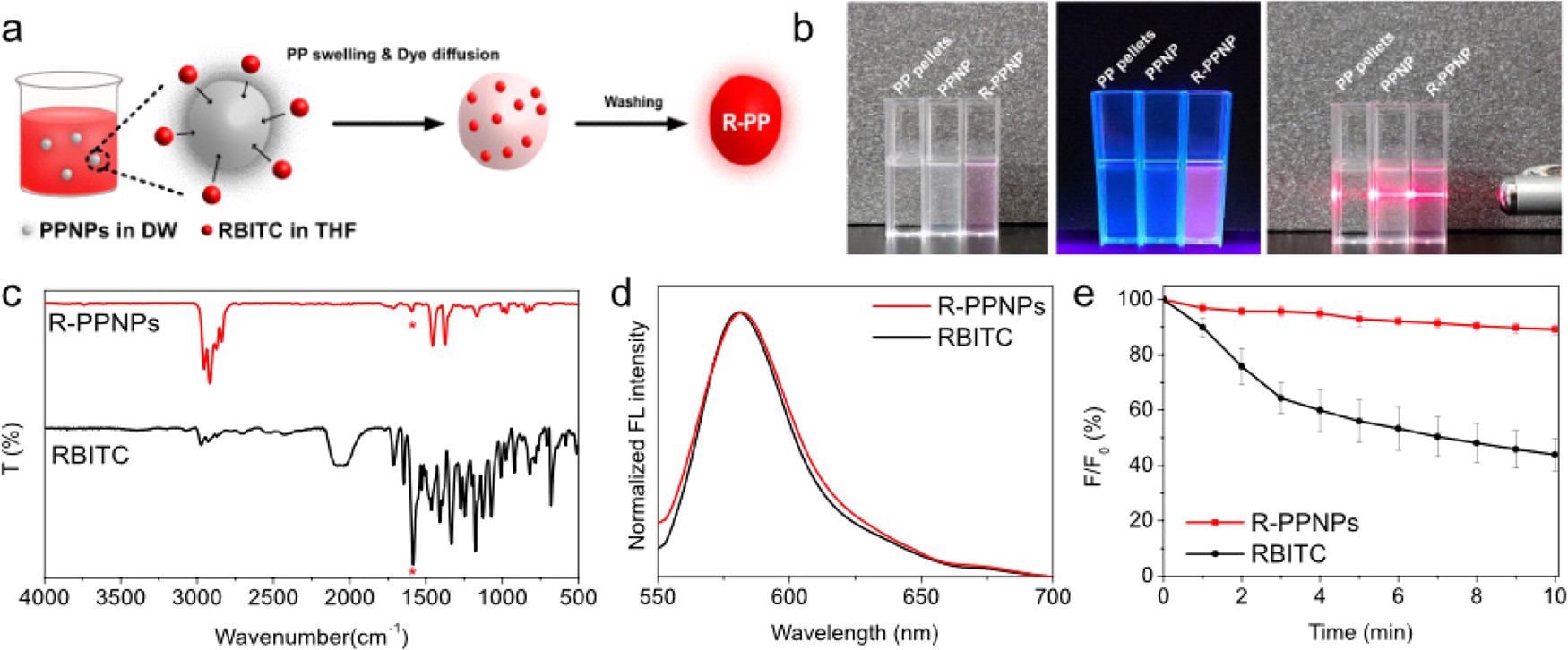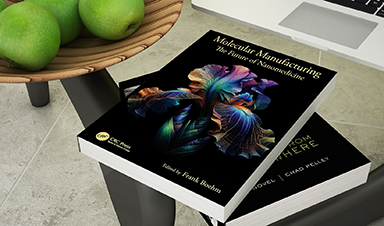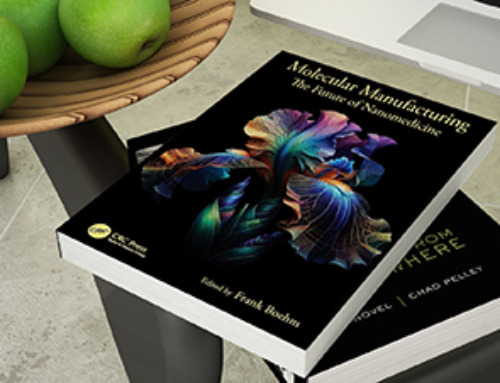The rising concern of plastic pollution and the increase in nanoplastics, which are small plastic debris particles with nanoscale sizes between 1 and 1000 nm, have become a field of research that has garnered popularity over recent years. Innovative research published in the journal, ACS Omega, has investigated the effect of nanoplastics on developing zebrafish embryos.
Nanoplastic Pollution
Nanoplastic pollution is a significant rising concern for public health and the environment.
Plastics, which have become a ubiquitous waste material found in landfills and the oceans, have been a growing concern due to their lack of biodegradability. Additionally, the eroding of large plastics into nanosize can be more detrimental for the environment and human health, with nanosized particles causing more damage.

(a) Scheme for preparation of the polypropylene nanoplastics (PPNPs) using a modified nonsolvent-induced phase separation (NIPS) method. (b) SEM images and the size distribution (n = 100). © Lee, W., Kim, H., Sim, Y., Kang, T. and Jeong, J., (2022)
With physiochemical properties associated with nanosized plastics, they can interact with biological systems, leading to disastrous effects. Additionally, nanoplastic pollution may not be purified by wastewater treatment systems.
It can be found in drinking water, causing them to be ingested; resultant oxidative stress and inflammation have been reported in diverse organisms. This can also occur through its ability to penetrate human tissue by crossing the lungs, skin and gastrointestinal barriers – which can be deleterious for health.
Plastic types that are a risk and constitute plastic debris include polystyrene, polyethylene, and polypropylene (PP). Polystyrene has largely been responsible for the risk that nanoplastics hold due to its commercial availability of various sizes and surface charges; however, while this plastic has high usage, polyethylene and polypropylene are ubiquitously detected in plastic debris in the environment.
While polypropylene is abundant in the environment, there are limited studies on this plastic type. Regardless, its incorporation as the most used plastic, such as within food packaging, automotive components, and even personal protective equipment (PPE), including masks that have increased during the COVID-19 pandemic, raises the concern for plastic pollution.
The accumulation of PP into microplastics such as UV radiation, oxidation, and biofilms can be a health risk with the detection of PP being found gastrointestinal tracts of sea turtles on the Atlantic coastline of Florida after only being post-hatched for 96 hours. Additionally, PP microplastics were found to induce cytotoxicity, proinflammatory cytokine production, oxidative stress and intestinal damage in human-derived cell and animal models such as zebrafish.
With the disastrous effect of microplastics on both the environment and human health, fragmentation into nanosized particles could be potentially further hazardous. This plastic pollution, which is a major concern due to associated plastic manufacturing, requires further research to understand the effects of polypropylene nanoplastics.
Innovative Nanoplastic Research
The researchers of this innovative study aimed to investigate the biological effects of nanoscale polypropylene in an animal model utilizing developing zebrafish embryos.
The team produced PPNPs utilizing a high yield method, including nonsolvent-induced phase separation; they fabricated PPNPs within a spherical shape with an average diameter of 562.15 ± 118.47 nm. They were then fluorescently labeled utilizing the combined swelling-diffusion method to investigate and observe the biodistribution of these particles after being exposed to developing zebrafish embryos.
Interestingly, the researchers found the fluorescent-labeled polypropylene nanoplastics internalized through ingestion and found even in the intestines of developing zebrafish embryos before being eventually excreted.

(a) Scheme of fluorescence labeling of PPNPs by the CSD method. (b) Photographs of PP pellets, PPNPs, and R-PPNP suspension in DW under visible light (left), UV light (365 nm, middle), and visible light with laser beam (right). (c) FT-IR spectra, (d) fluorescence spectra, and (e) fluorescence stability of RBITC and R-PPNPs. © Lee, W., Kim, H., Sim, Y., Kang, T. and Jeong, J., (2022)
Significant Implications for Environmental and Human Health
Overcoming the limitations of prior investigations into polypropylene plastic pollution, this novel research has uncovered the significant effect that nanoplastics can have on biological systems.
The team has raised awareness of the biodistribution of nanoplastics, especially polypropylene, which is found significantly in plastic debris within the environment. This study can be a basis for further research into the effect that nanoplastics can have on biological systems, such as focusing on oxidative stress and potential interactions that may cause harm for human health if ingested.
The research team can also aid in bringing awareness to the significance of nanoplastic pollution and its effects on the environment, with microplastic awareness being provided with traction. This can translate to reducing the manufacturing of polypropylene-based plastics, including finding other biodegradable plastics for applications, including PPE, which has become an increasing concern for plastic pollution.
Creating biodegradable plastics can ease plastic pollution and advancement in wastewater treatments can reduce any harmful effects these plastics can have on animal and human health.

Optical and fluorescence images of zebrafish embryos with or without R-PPNP treatments at 24 and 72 hpf. These images were taken after 24 h exposure. © Lee, W., Kim, H., Sim, Y., Kang, T. and Jeong, J., (2022)
News
Two New Books From Frank Boehm, NA Founder – To be Released Dec. 2025
Molecular Manufacturing: The Future of Nanomedicine This book explores the revolutionary potential of atomically precise manufacturing technologies to transform global healthcare, as well as practically every other sector across society. This forward-thinking volume examines [...]
What could the future of nanoscience look like?
Society has a lot to thank for nanoscience. From improved health monitoring to reducing the size of electronics, scientists’ ability to delve deeper and better understand chemistry at the nanoscale has opened up numerous [...]
Scientists Melt Cancer’s Hidden “Power Hubs” and Stop Tumor Growth
Researchers discovered that in a rare kidney cancer, RNA builds droplet-like hubs that act as growth control centers inside tumor cells. By engineering a molecular switch to dissolve these hubs, they were able to halt cancer [...]
Platelet-inspired nanoparticles could improve treatment of inflammatory diseases
Scientists have developed platelet-inspired nanoparticles that deliver anti-inflammatory drugs directly to brain-computer interface implants, doubling their effectiveness. Scientists have found a way to improve the performance of brain-computer interface (BCI) electrodes by delivering anti-inflammatory drugs directly [...]
After 150 years, a new chapter in cancer therapy is finally beginning
For decades, researchers have been looking for ways to destroy cancer cells in a targeted manner without further weakening the body. But for many patients whose immune system is severely impaired by chemotherapy or radiation, [...]
Older chemical libraries show promise for fighting resistant strains of COVID-19 virus
SARS‑CoV‑2, the virus that causes COVID-19, continues to mutate, with some newer strains becoming less responsive to current antiviral treatments like Paxlovid. Now, University of California San Diego scientists and an international team of [...]
Lower doses of immunotherapy for skin cancer give better results, study suggests
According to a new study, lower doses of approved immunotherapy for malignant melanoma can give better results against tumors, while reducing side effects. This is reported by researchers at Karolinska Institutet in the Journal of the National [...]
Researchers highlight five pathways through which microplastics can harm the brain
Microplastics could be fueling neurodegenerative diseases like Alzheimer's and Parkinson's, with a new study highlighting five ways microplastics can trigger inflammation and damage in the brain. More than 57 million people live with dementia, [...]
Tiny Metal Nanodots Obliterate Cancer Cells While Largely Sparing Healthy Tissue
Scientists have developed tiny metal-oxide particles that push cancer cells past their stress limits while sparing healthy tissue. An international team led by RMIT University has developed tiny particles called nanodots, crafted from a metallic compound, [...]
Gold Nanoclusters Could Supercharge Quantum Computers
Researchers found that gold “super atoms” can behave like the atoms in top-tier quantum systems—only far easier to scale. These tiny clusters can be customized at the molecular level, offering a powerful, tunable foundation [...]
A single shot of HPV vaccine may be enough to fight cervical cancer, study finds
WASHINGTON -- A single HPV vaccination appears just as effective as two doses at preventing the viral infection that causes cervical cancer, researchers reported Wednesday. HPV, or human papillomavirus, is very common and spread [...]
New technique overcomes technological barrier in 3D brain imaging
Scientists at the Swiss Light Source SLS have succeeded in mapping a piece of brain tissue in 3D at unprecedented resolution using X-rays, non-destructively. The breakthrough overcomes a long-standing technological barrier that had limited [...]
Scientists Uncover Hidden Blood Pattern in Long COVID
Researchers found persistent microclot and NET structures in Long COVID blood that may explain long-lasting symptoms. Researchers examining Long COVID have identified a structural connection between circulating microclots and neutrophil extracellular traps (NETs). The [...]
This Cellular Trick Helps Cancer Spread, but Could Also Stop It
Groups of normal cbiells can sense far into their surroundings, helping explain cancer cell migration. Understanding this ability could lead to new ways to limit tumor spread. The tale of the princess and the [...]
New mRNA therapy targets drug-resistant pneumonia
Bacteria that multiply on surfaces are a major headache in health care when they gain a foothold on, for example, implants or in catheters. Researchers at Chalmers University of Technology in Sweden have found [...]
Current Heart Health Guidelines Are Failing To Catch a Deadly Genetic Killer
New research reveals that standard screening misses most people with a common inherited cholesterol disorder. A Mayo Clinic study reports that current genetic screening guidelines overlook most people who have familial hypercholesterolemia, an inherited disorder that [...]





















